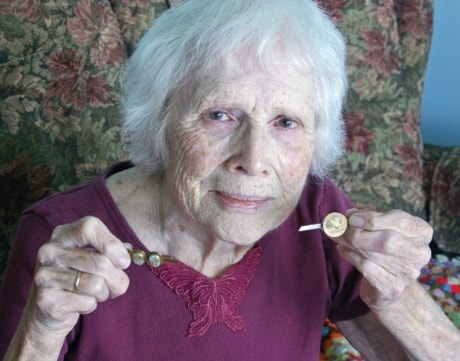Dagmar Haupthoff slowly flips through the pages of a book written about her great-grandfather, John Swanson. The text, which was never published, is about five centimetres thick and looks like it belongs in a high school classroom.
The book, Captain John Swanson and the Hudson’s Bay Company in Frontier B.C. 1842-1872, was given to Haupthoff as a gift from author Lloyd Bailey many years ago. It’s one of the few things she has left that connects her to Swanson.
Swanson was a captain of the S.S. Beaver, a steamship built by the British in 1835 and used as a floating trading post for the Hudson’s Bay Company in parts of B.C.
The Beaver was the first steamship on the West Coast. It came to Victoria in 1843, leading James Douglas to the site chosen for Fort Victoria.
During the gold rush, the boat transported people between Victoria and the Lower Mainland, and was later used as a tug and transport vessel. It operated for 17 years, before it ran aground at Prospect Point in Stanley Park in 1888.
Haupthoff’s Oak Bay home is decorated with paintings of ships, such as the Beaver, and Indian-inspired portraits. A lamp resembling a captain’s wheel sits on a small table. Above her couch a model of a ship is on display.
Haupthoff, who is in her 80s, was never told much about her great-grandfather. Her grandmother Emily Caroline Bendrodt, the daughter of Capt. Swanson, didn’t talk about him, she says.
Swanson married a woman named Hytah from an Alaskan First Nation known as Tlingit.
“(In those days) some of the families, including my own, were ashamed of that, that they had married out of their colour, and I think that’s why I didn’t hear about it from any of my family,” Haupthoff says.
The stories that Haupthoff knows of her great-grandparents come from books that she’s read and stories other people have told her.
One memory she has from her childhood is digging through a chest in her old family home on Quebec Street.
“Up on the second floor there was a big chest. … It was coloured in orange and it had Indian motifs on it,” she says. “I used to love, as a child, to go and look in this chest because there were all kinds of interesting things in there.”
Haupthoff later discovered that the chest belonged to her great-grandmother.
It was her hope chest, Haupthoff explains, a trunk full of belongings that she kept to bring with her into her marriage.
Once the family home was sold, Haupthoff assumed the chest went along with it.
“I often think about it, the hope chest,” she says. “It probably went with the house, and I find that very disturbing, that (my aunt) didn’t keep that.”
Haupthoff does, however, have a few souvenirs to remind her of her great-grandfather.
She places two brooches on the kitchen table. One is made out of granite found by Swanson, and one is made of copper from the Beaver.
Her father had the granite brooch made for her and a matching ring made for himself, she explains.
“I don’t wear it very much,” she adds. “I should wear it more often.”
The other pin, which displays the Beaver, she received from a lady who has a matching necklace, Haupthoff says.
This fall, copper medals, similar to the piece that Haupthoff has, will be awarded to individuals making outstanding maritime achievements in B.C.
The Maritime Museum of B.C. introduced the S.S. Beaver Medal for Maritime Excellence early this year. The deadline for nominations is Friday (June 29).
With few relatives left, Haupthoff hopes the medal will help keep the story of the Beaver alive.
“I think it’s a great idea,” she says. “We have to keep the local history in the forefront to remind the young people of the sacrifices made by the pioneers (of our country).”
For details about the medal and nominations, see
